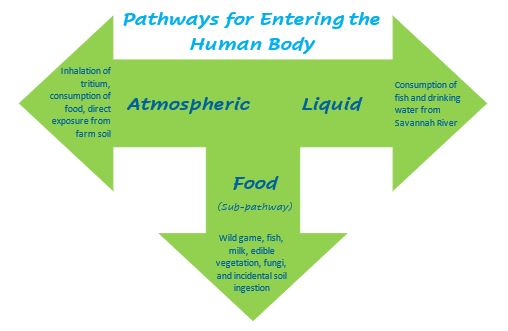ESOP uses data from environmental monitoring activities around the perimeter of SRS each year to calculate the potential radiation dose to the surrounding public within a 50-mile radius of the SRS center.
Potential radionuclide dose or exposure to the public is calculated from radioactive concentrations that are identified in the environment. A comparison of similar ESOP and SRS media allows for an evaluation of both environmental programs based on similar dose scenarios.
Each year, ESOP reviews the different inhalation, ingestion, and external exposure pathways that may result in a dose to the public. This identifies the possible routes of exposure and types of radiation that may contribute to an individual's radiation dose.
ESOP calculates two yearly doses: Maximum Exposed Individual (MEI) and Average Exposed Individual (AEI).
- Maximum Exposed Individual (MEI) = a hypothetical subsistence and survivalist type of individual who resides downriver in the area below all SRS contributions to the Savannah River, visits the entire 50-mile perimeter study area, and receives the MEI dose based on the single highest detection per radionuclide per media detected in the environment. A typical person should receive a lower dose than the MEI as it is a conservative estimate that is based on consumption rates with no modeling.
- Average Exposed Individual (AEI) = a conservative estimate based on consumption rates, average dose per media and is based on sample results only with no modeling. The AEI dose is more representative of the likely dose to the general public than the MEI dose although it also skews high, as only detections are used in the dose calculations. For a typical person in the study area, the dose they receive should be lower than the AEI dose.
